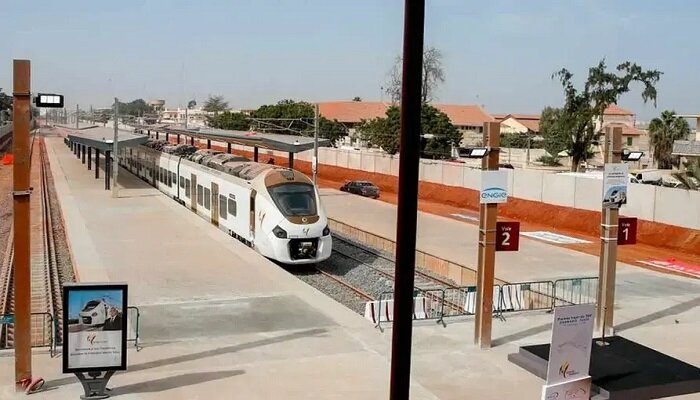It is well to be noted that the transportation sector has for long stood as the backbone of global commerce as well as economic growth. Right from ranging from railroads and highways to airports as well as sea and maritime ports, this industry happens to be the lifeblood of any economy. Safeguarding its crucial infrastructure is quite necessary when it comes to ensuring the mass, smooth flow of goods as well as people across the world.
The growth when it comes to digitalization has without a shred of doubt gone on to transform rail and transportation systems, thereby bringing unprecedented efficiency, automation, as well as data-driven decision-making. This shift has also made it a bit more intricate to safeguard its critical infrastructure and also maintain the safety as well as integrity of this major sector going forward.
In the years that have gone by, there has been quite a prominent and noticeable rise in cyber-induced operational disruptions in the transportation gamut. Given the societal significance it has, this sector has gone on to become a prime target when it comes to malicious actors seeking to exploit its digital susceptibilities. These cyber incidents have thereby led to disruptions, data breaches, as well also costly physical and reputational damage.
To put this forward, ransomware attacks on Forward Air in 2020 and on the New York Metropolitan Transportation Authority- MTA in 2021 demonstrate that companies not only wield prominent economic influence but at the same time also have the potential to profoundly affect national security, economy, along with safety.
Railways along with transportation operators go on to find themselves at the crossroads when it comes to innovation and vulnerability, thereby requiring a proactive as well as a resilient approach to protecting critical infrastructure. It happens to be a fundamental part of managing day-to-day risks in this new age. It demands a major shift when it comes to conservative minds, in which cybersecurity is not just a box to check off but is an integral part of a company’s DNA along with its strategy.
The Era of Critical Infra Security
Historically, cybersecurity push prioritized IT since the level of awareness happens to be high and most external network interfaces have in them corporate IT environments. Over the last decade, the convergence of IT with operational technology- OT systems has put some prominent pressure on security teams so as to implement certain more robust cybersecurity steps. Many organizations today ought to manage the security of flat networks or even the ever-growing, upscaled legacy networks- which is itself a challenging mission, specifically in the case of critical infrastructure.
Within the rail sector, for instance, OT has in it technologies as well as processes that go on to govern the physical safety as well as operations of railroads that include signaling, rolling stock, control systems, track infrastructure, station infrastructure, etc. Unlike IT, in which data security happens to be paramount, OT goes on to focus on safe and reliable operation when it comes to critical infra processes.
Within transportation, it happens to be even more crucial and goes on to involve protecting human lives, sensitive passenger data, as well as, almost immediately, a company’s public reputation. A prominent cybersecurity incident for such an organization can have immediate and real-world consequences. These may go on to include the derailment of train or even the redirection when it comes to an aircraft, thereby posing a direct risk to human life as well as property.
To add to this issue, critical infrastructures go on to often function by using legacy OT systems that have long life cycles. Originally, having a dearth of cybersecurity measures, these systems happen to be highly susceptible when it comes to modern, advanced threats, as well as easily exploitable. Unlike IT, where routine hardware as well as software updates happen to be standard, OT systems go on to prioritize stability, thereby often delaying cybersecurity solutions because of the inconvenience. Sans a mitigation strategy, these decisions can very well lead to catastrophic outcomes.
Safeguarding the Heavy Transport Sector
In light of the upgraded sophistication when it comes to cyber threats, prominent changes are required in the way one goes on to perceive cybersecurity. The embrace of a cybersecurity mindset goes on to serve as the initial and even the most fundamental step when it comes to achieving a strategic benefit within the space. It is a major shift that goes on to involve embracing not only the technologies but, at the same time, also making the cultural as well as operational adjustments that are needed for a comprehensive, organization-wide approach to things.
Moreover, the contemporary threat spectrum happens to be dynamic and growingly complex. To efficiently counter such threats, strategy must transition from reactive responses to proactive expectations and go on to demand an ongoing process of learning, adapting, as well as evolving. The digitalization of the sector, teamed with convergence when it comes to IT, IoT, as well as OT systems, goes on to amplify the intricacy of this task. Companies are required to consider not just safeguarding their digital assets but, at the same time, maintaining the operational integrity within their systems. The major hurdle lies when it comes to reshaping the organizational culture, especially within sectors such as transportation, in which cybersecurity has been traditionally taken as a separate entity, which is, by the way, a position that is no longer viable.
The fact is that in practical terms, companies can go ahead and also start by evaluating their present cybersecurity posture by way of comprehensive risk assessments as well as a detailed asset inventory. This enables identifying vulnerable as well as critical systems, thereby giving out valuable insights into their functional significance as well as functionalities. Regular susceptibility scanning, penetration testing, as well as continuous monitoring happen to be equally critical. These actions offer real-time insights that happen to be required for swift threat safeguarding, detection, as well as response. Apart from this, including threat intelligence as an element of risk mitigation strategy helps unfold the specific types of attacks that are likely to target the organization’s proprietary assets, systems, as well as protocols.
Cementing cybersecurity within the core of an organization’s security strategy as well as daily operations enhances the protection of crucial infrastructure and also reinforces the trust as well as reliability upon which the transportation sector goes on to rest. In this interconnected digital era, a robust cybersecurity mindset goes beyond offering just protection; it also emerges as a competitive benefit, an enabler, as well as catalyst for sustainable growth, and, of course, a cornerstone of operational effectiveness.
The last thoughts
The reality of today points out the fact that the consequences when it comes to inaction are too problematic to ignore. Cyberthreats within the transport sector, which includes rail, go across the gamut of fear of potential financial losses and can compromise passenger as well as cargo safety, cause major disruptions in economies, and at the same time endanger national security. It threatens the things that one cares for the most, such as the safety of close ones.
It has always been required for trains to come with brakes, have resilient wheels, as well as incorporate a variety of emergency systems for them so as to run safely. For trains to keep going on this track, having a cybersecurity mindset has to be at the core of any infrastructure, be it rail or transport’s digital journey.


































